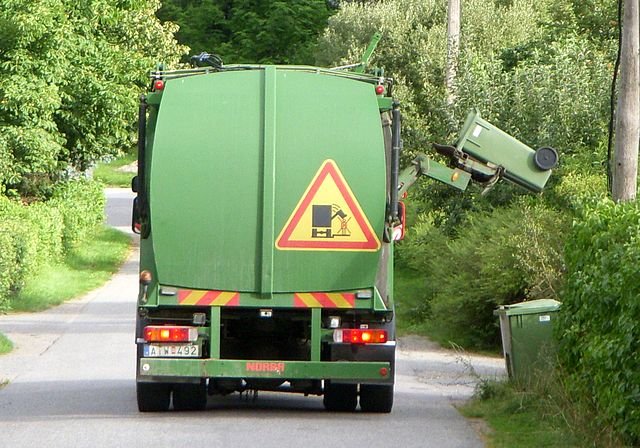Megacities are generally defined as cities with a population greater than 10 million. With this strict definition, it is no surprise that there are only around 30 or 40 megacities across the world. Alongside this, ‘sustainability’ and ‘megacity’ are terms that are almost inherently at odds with one another.
By their very design, megacities rely on resources from other distant places, as they rarely possess their own agricultural infrastructure. Because of this, megacities are generally forced to bear the costs of travel carbon for all the fresh produce that line their supermarket aisles.
In short, the way megacities have been designed and managed in the past is in need of some serious reform, with greater consideration towards the environment and greater investments in green infrastructure. Here’s how the globe’s megacities may be shaped by calls for sustainable growth in the not-so-distant future.
Streamlined waste management
With a population of 5 million, the city of Melbourne is poised to become a megacity in the next few decades. Civil engineers do have some concerns about the city’s ability to adapt to its forecasted growth, however. For instance, rubbish removal in Melbourne is already lagging behind when compared to other cities with similar populations. That being said, there are some other smaller ways in which Melbourne is also catching up – perhaps ready in time for when it’s projected to become a megacity in a few decade’s time.
Public waste bins in the Melbourne CBD are a type of smart bin that are solar-powered and are able to compact the rubbish much more effectively than standard bins. This results in fewer waste trucks travelling through the city less often, reducing their contribution to traffic congestion and carbon emissions. Going further, there are also emerging technologies that are able to use AI to recognise recycling and divert it away from landfill.
Melbourne’s comparatively higher than average population density is a factor to consider here as well, as the placement of bins and the routes of waste trucks are both likely to continue to be largely dictated by the flow of pedestrians through major throughways.
And what about the future of rubbish removal? Cities that are built with sustainability in mind would also be able to install waste bins with pneumatic pipes which transport rubbish directly to waste processing facilities. Given Melbourne’s grid-like layout and substantial underground system, it’s not unlikely that pneumatic pipes may become the veins of the city’s waste disposal system.
Increased accessibility and diverse transport options
Any larger city centre will naturally discourage the use of cars, as congested streets are already a byproduct of higher population density. This is immediately a boon in terms of sustainability, as fewer cars on the road means less pollution. That being said, the city needs to have the alternative transport options and infrastructure in place to make up for these ‘lost’ roadways. This includes bike pathways, pedestrian access, and perhaps most importantly, a variety of interconnected public transport options.
Tokyo is the largest city in the world yet is also ranked as one of the most livable. In fact, Japan’s capital is the only megacity to consistently land on many livability ranking lists. Japan’s public transport networks are world class, famous for having regular services and for being consistently on time. With bullet trains that reach 320km/h, you’d be hard pressed to find somewhere they can’t take you. As a bonus, they’ve recently become more accessible for wheelchair and mobility scooter users, as well as blind and deaf commuters too.
An abundance of green spaces
Green spaces are exactly what it says on the tin: areas of land that are predominantly covered by grass, trees or vegetation. Green spaces are vital in the development of any city but are of course, worth focusing on particularly when a city is developing into a megacity.
The presence of these spaces bring with them a whole slew of benefits. They have demonstrated that they are better for people’s mental health and also encourage a sense of social cohesion and community for people living in cities. The trees within these green spaces also do their part to mitigate urban pollution, and can even help keep cities cool during warmer weather.
The inclusion of green spaces into cities can also be more holistic – even if there isn’t space for a dedicated park, a tree-lined urban sprawl is far more appealing (and more accommodating towards urban wildlife) than an absolute lack of green.
A culture of urban agriculture
Finally, the perfect way to work against some of the extra reliance that megacities will naturally have on produce that is cultivated elsewhere, is for them to promote the development and upkeep of urban agriculture projects.
The space in any major city is limited, so rooftop farms are an excellent space-efficient step towards making megacities a little bit more self-sustaining. And like other green spaces, rooftop gardens and farms are also a great avenue towards promoting a sense of community within densely populated cities. Through novel processes such as hydroponics and aquaponics, rooftop farms can be sustainable without reliance on soil. They bring with them all the same benefits as green spaces with the added benefit of being a food source.
Some urban citizens are going as far as building honey farms on their rooftops, providing their wider communities with organic and locally grown honey, as well as cultivating local bee populations that can also help to maintain a city’s green spaces with ease.
As the number of megacities across the world continues to increase year upon year, our ideas about how to marry sustainability with megacities must rapidly transition from being an impossibility into being a reality. The logistics surrounding the infrastructure that makes up megacities is something that needs to be carefully considered as these cities grow larger, and not after that growth has already occurred.
Whilst these small steps towards sustainability aren’t essential to growing that city’s economy alongside its population, taking these measures for ensuring sustainable growth can certainly contribute to that city’s livability rating across the long term.
I suppose this exploration of the future of megacities all boils down to one question: without educated sustainable growth strategies in place, why should a future filled with megacities be considered anything but aspirational?






















